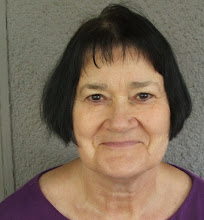Many writers enamored of the novels of the 19th century, when the novel really took over as a main literary genre, expect to be able to use some of the same literary techniques today. That direction often spells disaster for anyone wanting to publish. Most readers today, totally acculturated on movies and television, won't sit through (read through) a slow descriptive beginning, such as the childhood of the main character or a lengthy description of place. They' re wanting to be hooked right away into or they will move on to something that does that.
Now that's not to say that if you're the most exquisite poet who ever wrote a novel you can't capivate some readers. But most of us want to know right away who the main character is and what the dilemma is. It doesn't have to be the main dilemma but it needs to lead us in that direction. Who is this person we are going to spend a lot of hours with? What does he want? Why is she troubled?
I recently read a first chapter for a potential client in a lengthy novel on racism in America. She writes well and I am interested in the subject so I was ready to like it. But she spent the first chapter setting up a wealth of context for the story rather than plunging me right in and giving the context later. I would not have bought her book.
When you're reading, watch for beginnings that grab you. See if something along that line will fit for your own story.
Thursday, October 14, 2010
Monday, October 11, 2010
Avoiding stereotypical characters
Fictional characters tend to fall into predictable patterns and circumstances (also known as stereotypes). Some of these are cultural stereotypes (the star athlete, the cheerleader, the computer geek, the crooked poltician) and some are literary stereotypes (Holden Caulfield, Elmer Gantry, Emma Bovary).
To keep your characters from being flat, empty stereotypes requires the same kind of care and attention that their physical description does. Each human being is unique through his or her inner world: the thoughts, feelings, and responses to circumstances. Genre fiction at its best is a prime example. Most detective novels rely on a standard plot (dead person, clues, suspects, discovery, solution to the mystery). What makes some of these stories great is not only a macabre plot twise. Far more often, it is the inner working of the detective, the inner working of the suspects, and some of the secondary characters as well. Harry Bosch, Dismas Hardy--these are great characters, people we come to know.
We feel intimate with them. We know them. Give your characters an inner life, a truly inner life, and it will add a layer of richness to your work.
To keep your characters from being flat, empty stereotypes requires the same kind of care and attention that their physical description does. Each human being is unique through his or her inner world: the thoughts, feelings, and responses to circumstances. Genre fiction at its best is a prime example. Most detective novels rely on a standard plot (dead person, clues, suspects, discovery, solution to the mystery). What makes some of these stories great is not only a macabre plot twise. Far more often, it is the inner working of the detective, the inner working of the suspects, and some of the secondary characters as well. Harry Bosch, Dismas Hardy--these are great characters, people we come to know.
We feel intimate with them. We know them. Give your characters an inner life, a truly inner life, and it will add a layer of richness to your work.
Subscribe to:
Comments (Atom)

